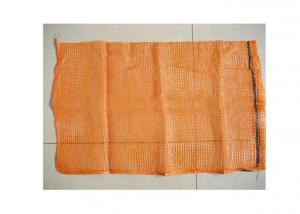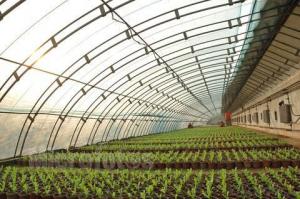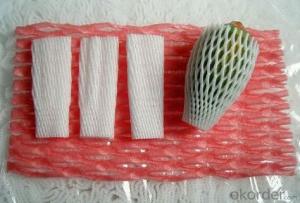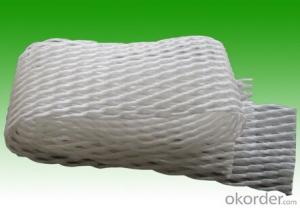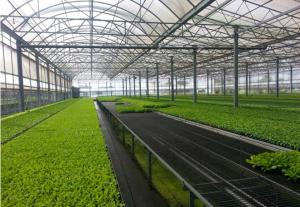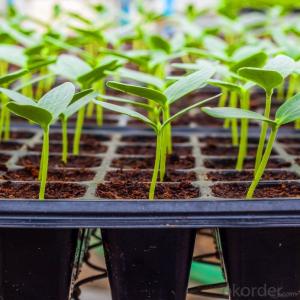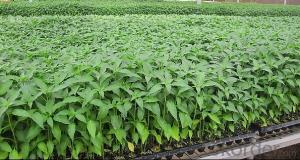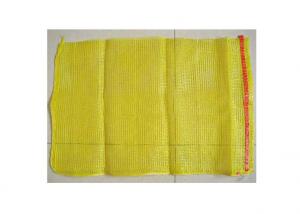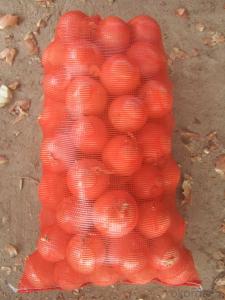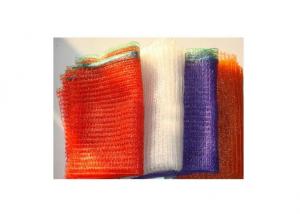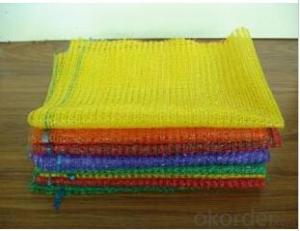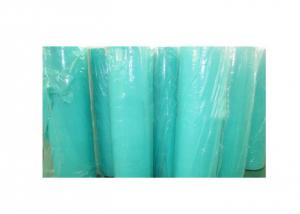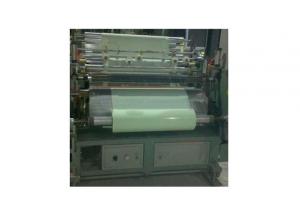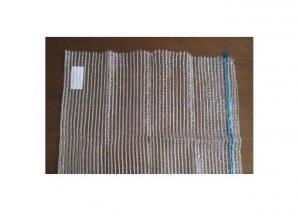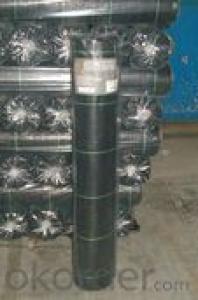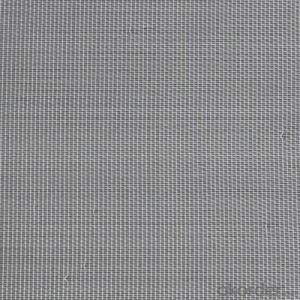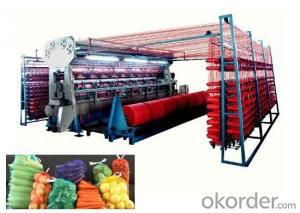Polymesh Sacks for Vegetable
- Loading Port:
- China Main Port
- Payment Terms:
- TT or LC
- Min Order Qty:
- 100000 Pieces m.t.
- Supply Capability:
- 300 Tons per Month m.t./month
OKorder Service Pledge
Quality Product, Order Online Tracking, Timely Delivery
OKorder Financial Service
Credit Rating, Credit Services, Credit Purchasing
You Might Also Like
Detailed Product Description
Polymesh Sacks for packing vegetables, firewoods,
Polymesh Sacks for packing vegetables, onions, potatoes,
Feature:
1)Made of polypropylene material
2)Color: red, yellow, orange, green, whiskey, etc.
3)Size: 55x85cm, 52x82cm, 50x80cm, 45x78cm, , etc.
4)Top: with drawstring
5)Sewing: " L" model
6)Printing label available
If you are interested in our products, please feel free to contact us for more informations.
- Q: what is the difference bet. glass and plastic lenses? What is more useful?
- Plastic weighs less, but is subject to easier scratching. The application for which the lenses are required determines which is more useful. The heavy weight of glass makes some people prefer plastic lenses for their spectacles.
- Q: How do you choose ground cover for a wildlife-friendly garden?
- When choosing ground cover for a wildlife-friendly garden, there are a few key factors to consider. Firstly, opt for native plants as they provide food and habitat for local wildlife. Look for ground cover that offers a variety of textures and heights, creating diverse microhabitats for different species. Consider plants that provide nectar, berries, or seeds to attract pollinators, birds, and insects. Additionally, select ground cover that requires minimal maintenance and is resilient to local climate conditions. Lastly, avoid using any chemicals or pesticides that may harm wildlife.
- Q: Can ground cover plants be used to improve soil organic matter content?
- Yes, ground cover plants can be used to improve soil organic matter content. Ground cover plants have the ability to add organic material to the soil through their fallen leaves, stems, and roots. As these plant materials decompose, they contribute to the overall organic matter content of the soil, enhancing its fertility, structure, and nutrient-holding capacity. Additionally, ground cover plants can also reduce soil erosion, conserve moisture, and suppress weed growth, further benefiting the soil health and organic matter content.
- Q: How long does agricultural plastic last?
- Agricultural plastic can vary in its lifespan depending on various factors. Generally, plastic mulch films used in agriculture can last for one to three years before they start to degrade. However, some types of plastic, such as high-density polyethylene (HDPE), can last longer, up to five years or more. It's important to note that environmental conditions, UV exposure, and proper disposal methods can significantly impact the longevity of agricultural plastic.
- Q: How are plastic nursery pots used in agriculture?
- Plastic nursery pots are commonly used in agriculture for starting and growing plants. These pots provide a convenient and cost-effective solution for propagating various crops such as flowers, vegetables, and trees. They offer a controlled environment for the plant's initial growth stage, allowing for better root development and protection from harsh weather conditions. Plastic nursery pots also facilitate easy transportation and transplanting, as they are lightweight and durable. Overall, these pots play a vital role in enhancing the efficiency and success of agricultural practices.
- Q: Are there nursery trays with adjustable humidity control?
- Yes, there are nursery trays available with adjustable humidity control. These trays are designed to provide optimal growing conditions for plants by allowing users to regulate the humidity levels within the tray.
- Q: Can ground cover be used in a rock garden?
- Yes, ground cover can be used in a rock garden. Ground cover plants can help to fill in the gaps between rocks and provide a lush and cohesive look to the garden. They also help to suppress weed growth and retain moisture in the soil. However, it is important to choose ground cover plants that are suited to the specific conditions of a rock garden, such as being drought-tolerant and able to withstand rocky and well-drained soil.
- Q: The first plastic, was made from milk and what other ingredient ?
- During World War 1 with the production of mustard gas, a residue would build up within the catalytic chamber. This residue was polyethylene, the first real plastic. It was not commercially manufactured for many more years. The bakelites commonly referred to as the first plastics were actually the first composites. They are not plastics at all, they were named prior to the final definition of plastic being established.
- Q: What are the benefits of using plastic silage covers?
- There are several benefits of using plastic silage covers. Firstly, they provide an effective barrier against oxygen, preventing spoilage and mold growth in the silage. Secondly, plastic covers help to maintain the nutritional quality of the silage by reducing dry matter losses. Additionally, they offer protection against weather elements such as rain, snow, and wind, ensuring the silage remains well-preserved. Lastly, plastic silage covers are relatively easy to handle and apply, making the process of covering and uncovering silage more efficient.
- Q: Can ground cover plants be used to suppress weed growth in vegetable gardens?
- Yes, ground cover plants can be used to suppress weed growth in vegetable gardens. Ground cover plants help to smother weeds by shading the soil, preventing weed seeds from germinating and competing for nutrients. Additionally, ground cover plants can help improve soil health and moisture retention, further inhibiting weed growth.
Our products of the company sell well in domestic more than ten foreign trade company and international markets.With a wide range, good quality, reasonable prices and stylish designs, our products are extensively used in pharmaceutical packaging and other industries.We welcome new and old customers from all walks of life to contact us for future business relationships and achieving mutual success!
1. Manufacturer Overview
| Location | Shandong,China (Mainland) |
| Year Established | 2006 |
| Annual Output Value | US$10 Million - US$50 Million |
| Main Markets | 20.00% Western Europe 20.00% South America 20.00% Northern Europe 10.00% Eastern Europe 5.00% Africa 5.00% Mid East 5.00% Southern Europe 4.00% North America 2.00% Eastern Asia 2.00% Southeast Asia 2.00% Central America 2.00% Oceania 2.00% South Asia 1.00% Domestic Market |
| Company Certifications | Business license of enterprise legal person |
2. Manufacturer Certificates
| a) Certification Name | |
| Range | |
| Reference | |
| Validity Period |
3. Manufacturer Capability
| a) Trade Capacity | |
| Nearest Port | Qingdao |
| Export Percentage | 91% - 100% |
| No.of Employees in Trade Department | 6-10 People |
| Language Spoken: | English, Chinese |
| b) Factory Information | |
| Factory Size: | 50,000-100,000 square meters |
| No. of Production Lines | 10 |
| Contract Manufacturing | OEM Service Offered Buyer Label Offered |
| Product Price Range | Low and/or Average |
Send your message to us
Polymesh Sacks for Vegetable
- Loading Port:
- China Main Port
- Payment Terms:
- TT or LC
- Min Order Qty:
- 100000 Pieces m.t.
- Supply Capability:
- 300 Tons per Month m.t./month
OKorder Service Pledge
Quality Product, Order Online Tracking, Timely Delivery
OKorder Financial Service
Credit Rating, Credit Services, Credit Purchasing
Similar products
Hot products
Hot Searches
Related keywords
